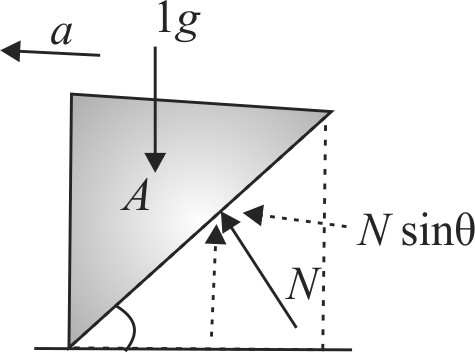Explanation:
If the block \(A\) will not slip up on \(B\), both the blocks should move together in horizontal direction, and the acceleration of the block \(A\) in vertical direction should be zero
\(P = (1 + 1)a = 2a\,\,\,\,\,\,\,\,\,\,\,\,\,\,\,\,\,\,\,\,\,\,\,\,\,\,\,\,\,\,\,(1)\)

From \(F.B.D.\) of the block \(A\),
\(N\cos 37^\circ = 1\;{\rm{g}}\)
\(N\sin 37^\circ = 1a\)
From (2) and (3), \(\dfrac{a}{g}=\tan 37^{\circ}\)
\(a=10 \times \dfrac{3}{4}=7.5 {~m} / {s}^{2}\)
From (1), \(P=2 \times 7.5=15 {~m} / {s}^{2}\)